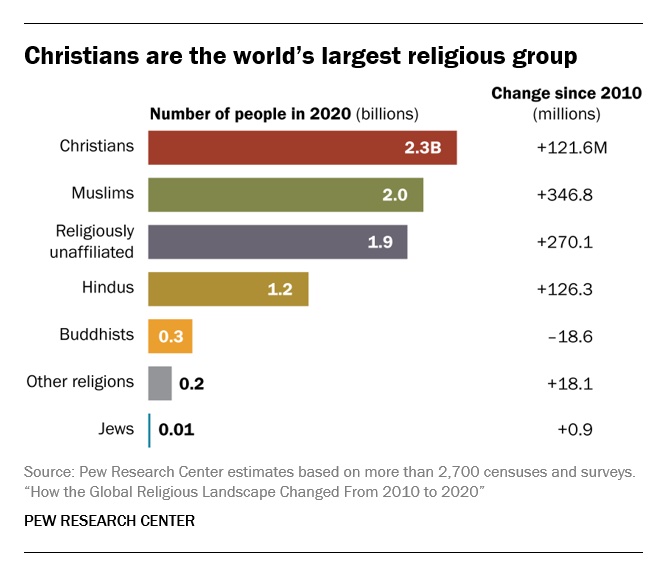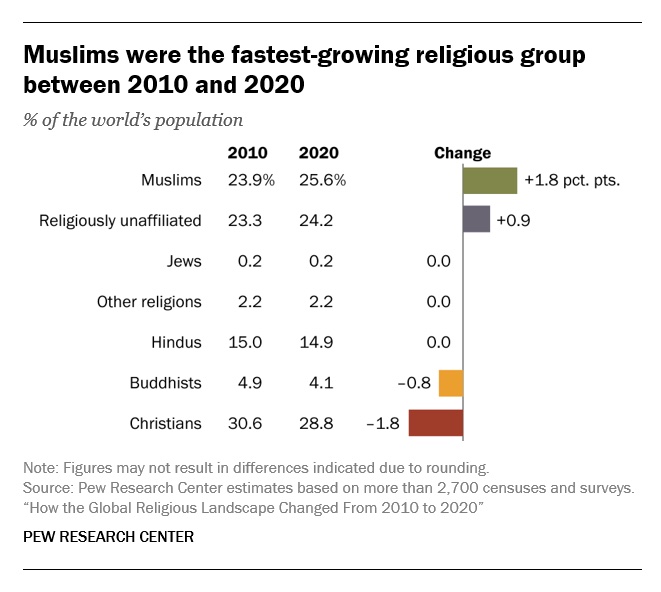Uncategorized
Beyond the ‘Day of Hate’: The best strategy to keep American Jews safe over the long term
(JTA) — My synagogue sent out a cautiously anxious email yesterday about an event coming this Shabbat, a neo-Nazi “Day of Hate.” The email triggered fuzzy memories of one of the strangest episodes that I can remember from my childhood.
Sometime around 1990, in response to local neo-Nazi activity, some Jews from my community decided to “fight back.” I don’t know whether they were members of the militant Jewish Defense League, or perhaps just sympathetic to a JDL-style approach. When our local Jewish newspaper covered the story, it ran on its front cover a full-page photo of a kid from my Orthodox Jewish high school. The photo showed a teenage boy from behind, wearing a kippah and carrying a baseball bat that was leaning threateningly on his shoulder.
As it happens, “Danny” was not a member of the JDL, he was a kid on his way to play baseball. Sometimes, a baseball bat is just a baseball bat. But not for us anxious Jews in America: We want to see ourselves as protagonists taking control of our destiny, responding to antisemites with agency, with power, with a plan. I’m sorry to say that as I look around our community today, it seems to me that we have agency, and we have power — but we certainly don’t seem to have a plan.
The tactics that the American Jewish community uses to fight back against antisemitism are often ineffective on their own and do not constitute a meaningful strategy in the composite. One is that American Jews join in a partisan chorus that erodes our politics and fixates on the antisemitism in the party they don’t vote for. This exacerbates the partisan divide, which weakens democratic culture, and turns the weaponizing of antisemitism into merely a partisan electoral tactic for both sides.
Another tactic comes from a wide set of organizations who have declared themselves the referees on the subject and take to Twitter to name and shame antisemites. This seems to amplify and popularize antisemitism more than it does to suppress it.
A third common tactic is to pour more and more dollars into protecting our institutions with robust security measures, which no one thinks will defeat antisemitism, but at least seeks to protect those inside those institutions from violence, though it does little to protect Jews down the street. Richer Jewish institutions will be safer than poorer ones, but Jews will continue to suffer either way.
A fourth tactic our communal organizations use to fight antisemitism is to try to exact apologies or even fines from antisemites to get them to retract their beliefs and get in line, as the Anti-Defamation League did with Kyrie Irving, an approach that Yair Rosenberg has wisely argued is a no-win proposition. Yet another tactic is the insistence by some that the best way to fight antisemitism is to be proud Jews, which has the perverse effect of making our commitment to Jewishness dependent on antisemitism as a motivator.
And finally, the most perverse tactic is that some on both the right and the left fight antisemitism by attacking the ADL itself. Since it is so hard to defeat our opponents, we have started beating up on those that are trying to protect us. What could go wrong?
Steadily, like a drumbeat, these tactics fail, demonstrating themselves to be not a strategy at all, and the statistics continue to show a rise in antisemitism.
Perhaps we are too fixated on the idea that antisemitism is continuous throughout Jewish history, proving only that there is no effective strategy for combating this most persistent of hatreds.
Instead, we would do well to recall how we responded to a critical moment in American Jewish history in the early 20th century. In the aftermath of the Leo Frank lynching in 1915 – the murder of a Jewish man amid an atmosphere of intense antisemitism — Jewish leaders formed what would become the ADL by building a relationship with law enforcement and the American legal and political establishment. The ADL recognized that the best strategy to keep American Jews safe over the long term, in ways that would transcend and withstand the political winds of change, was to embed in the police and criminal justice system the idea that antisemitism was their problem to defeat. These Jewish leaders flipped the script of previous diasporic experiences; not only did they become “insiders,” they made antisemitism anathema to America itself. (And yes, it was the Leo Frank incident that inspired “Parade,” the forthcoming Broadway musical that this week attracted white supremacist protesters.)
For Jews, the high-water mark of this strategy came in the aftermath of the Tree of Life shooting in Pittsburgh. It was the low point in many ways of the American Jewish experience, the most violent act against Jews on American soil, but it was followed by a mourning process that was shared across the greater Pittsburgh community. The words of the Kaddish appeared above the fold of the Pittsburgh Post-Gazette. That is inconceivable at most other times of Jewish oppression and persecution. It tells the story of when we are successful – when antisemitism is repudiated by the general public. It is the most likely indicator that we will be collectively safe in the long run.
We were lucky that this move to partner with the establishment was successful. I felt this deeply on a recent trip to Montgomery, Alabama. Seeing the memorials to Black Americans persecuted and lynched by and under the very system that should have been protecting them from the worst elements of society is a reminder that not all minorities in America could then — or today — win over the elements of American society that control criminal justice.
Visitors view items left by well-wishers along the fence at the Tree of Life synagogue in Pittsburgh on the first anniversary of the attack there, Oct. 27, 2019. (Jeff Swensen/Getty Images)
A strategic plan to defeat antisemitism that must be collectively embraced by American Jews would build on this earlier success and invest in the infrastructure of American democracy as the framework for Jewish thriving and surviving, and continue the historic relationship-building that changed the Jews’ position in America. It would stop the counterproductive internecine and partisan battle that is undermining the possibility of Jewish collective mobilization.
It means more investment, across partisan divides, in relationships with local governments and law enforcement, using the imperfect “definitions of antisemitism” as they are intended — not for boundary policing, but to inform and help law enforcement to monitor and prevent violent extremism. It means supporting lawsuits and other creative legal strategies, like Integrity First for America’s groundbreaking efforts against the Unite the Right rally organizers, which stymie such movements in legal gridlock and can help bankrupt them.
It means practicing the lost art of consensus Jewish collective politics which recognize that there must be some baseline agreement that antisemitism is a collective threat, even if any “unity” we imagine for the Jewish community is always going to be be instrumental and short-lived.
It means supporting institutions like the ADL, even as they remain imperfect, even as they sometimes get stuck in some of the failed strategies I decried above, because they have the relationships with powerful current and would-be allies in the American political and civic marketplace, and because they are fighting against antisemitism while trying to stay above the partisan fray.
It means real education and relationship-building with other ethnic and faith communities that is neither purely instrumental nor performative — enough public relations visits to Holocaust museums! — so that we have the allies we need when we need them, and so that we can partner for our collective betterment.
And most importantly, it means investing in the plodding, unsexy work of supporting vibrant American democracy — free and fair elections, voting rights, the rule of law, peaceful transitions of power — because stable liberal democracies have been the safest homes for minorities, Jews included.
I doubt we will ever be able to “end” individual antisemitic acts, much less eradicate antisemitic hate. “Shver tzu zayn a Yid” (it’s hard to be a Jew). We join with our fellow Americans who live in fear of the lone wolves and the hatemongers who periodically terrorize us. But we are much more capable than we are currently behaving to fight back against the collective threats against us. Instead, let’s be the smart Americans we once were.
The real work right now is not baseball bats or billboards, it is not Jewish pride banalities or Twitter refereeing: It is quiet and powerful and, if done right, as American Jews demonstrated in the last century, it will serve us for the long term.
—
The post Beyond the ‘Day of Hate’: The best strategy to keep American Jews safe over the long term appeared first on Jewish Telegraphic Agency.
Uncategorized
How the Global Religious Landscape Changed from 2010 to 2020

Muslims grew fastest; Christians lagged behind global population increase
• Christians are the world’s largest religious group, at 28.8% of the global population. They are a majority everywhere except the Asia-Pacific and Middle East-North Africa regions. Sub-Saharan Africa has surpassed Europe in having the largest number of Christians. But Christians are shrinking as a share of the global population, as millions of Christians “switch” out of religion to become religiously unaffiliated.

• Muslims are the world’s second-largest religious group (25.6% of the world’s population) and the fastest-growing major religion, largely due to Muslims’ relatively young age structure and high fertility rate. They make up the vast majority of the population in the Middle East-North Africa region. In all other regions, Muslims are a religious minority, including in the Asia-Pacific region (which is home to the greatest number of Muslims).

• The religiously unaffiliated population is the world’s third-largest religious category (24.2% of the global population), after Christians and Muslims. Between 2010 and 2020, religiously unaffiliated people grew more than any group except Muslims, despite their demographic disadvantages of an older age structure and relatively low fertility. The unaffiliated made up a majority of the population in 10 countries and territories in 2020, up from seven a decade earlier.
• Hindus are the fourth-largest religious category (14.9% of the world’s population), after Christians, Muslims and religiously unaffiliated people. Most (99%) live in the Asia-Pacific region; 95% of all Hindus live in India alone. Between 2010 and 2020, Hindus remained a stable share of the world’s population because their fertility resembles the global average, and surveys indicate that switching out of or into Hinduism is rare.
• Buddhists (4.1% of the world’s population) are the only group in this report whose number declined worldwide between 2010 and 2020. This was due both to religious disaffiliation among Buddhists in East Asia and to a relatively low birth rate among Buddhists, who tend to live in countries with older populations. Most of the world’s Buddhists (98%) reside in the Asia-Pacific region, the birthplace of Buddhism.
• Jews, the smallest religious group analyzed separately in this report (0.2% of the world’s population), lagged behind global population growth between 2010 and 2020 – despite having fertility rates on par with the global average – due to their older age structure. Most Jews live either in North America (primarily in the United States) or in the Middle East-North Africa region (almost exclusively in Israel).
These are among the key findings of a Pew Research Center analysis of more than 2,700 censuses and surveys, including census data releases that were delayed due to the coronavirus pandemic. This report is part of the Pew-Templeton Global Religious Futures project, which analyzes global religious change and its impact on societies around the world. Funding for the Global Religious Futures project comes from The Pew Charitable Trusts and the John Templeton Foundation.
Uncategorized
Antisemitism in some unlikely places in America

By HENRY SREBRNIK Antisemitism flourishes in a place where few might expect to confront it – medical schools and among doctors. It affects Jews, I think, more emotionally than Judeophobia in other fields.
Medicine has long been a Jewish profession with a history going back centuries. We all know the jokes about “my son – now also my daughter – the doctor.” Physicians take the Hippocratic Oath to heal the sick, regardless of their ethnicity or religion. When we are ill doctors often become the people who save us from debilitating illness and even death. So this is all the more shocking.
Yes, in earlier periods there were medical schools with quotas and hospitals who refused or limited the number of Jews they allowed to be affiliated with them. It’s why we built Jewish hospitals and practices. And of course, we all shudder at the history of Nazi doctors and euthanasia in Germany and in the concentration camps of Europe. But all this – so we thought – was a thing of a dark past. Yet now it has made a comeback, along with many other horrors we assume might never reappear.
Since the Hamas attack on Israel on October 7, 2023, there has been a resurgence of antisemitism, also noticeable in the world of healthcare. This is not just a Canadian issue. Two articles on the Jewish website Tablet, published Nov. 21, 2023, and May 18, 2025, spoke to this problem in American medicine as well, referencing a study by Ian Kingsbury and Jay P. Greene of Do No Harm, a health care advocacy group, based on data amassed by the organization Stop Antisemitism. They identified a wave of open Jew-hatred by medical professionals, medical schools, and professional associations, often driven by foreign-trained doctors importing the Jew-hatred of their native countries, suggesting “that a field entrusted with healing is becoming a licensed purveyor of hatred.”
Activists from Doctors Against Genocide, American Palestinian Women’s Association, and CODEPINK held a demonstration calling for an immediate cease-fire in Gaza at the Hart Senate Office Building in Washington, D.C., Nov. 16, 2023, almost as soon as the war began. A doctor in Tampa took to social media to post a Palestinian flag with the caption “about time!!!” The medical director of a cancer centre in Dearborn, Michigan, posted on social media: “What a beautiful morning. What a beautiful day.” Even in New York, a physician commented on Instagram that “Zionist settlers” got “a taste of their own medicine.” A Boston-based dentist was filmed ripping down posters of Israeli victims and a professor at the University of Pennsylvania Perelman School of Medicine did the same. Almost three-quarters of American medical associations felt the need to speak out on the war in Ukraine but almost three-quarters had nothing to say about the war in Israel.
Antisemitism in academic medical centres is fostering noxious environments which deprive Jewish healthcare professionals of their civil right to work in spaces free from discrimination and hate, according to a study by the Data & Analytics Department of StandWithUs, an international, non-partisan education organization that supports Israel and fights antisemitism.
“Academia today is increasingly cultivating an environment which is hostile to Jews, as well as members of other religious and ethnic groups,” StandWithUs director of data and analytics, and study co-author, Alexandra Fishman, said on May 5 in a press release. “Academic institutions should be upholding the integrity of scholarship, prioritizing civil discourse, rather than allowing bias or personal agendas to guide academic culture.”
The study, “Antisemitism in American Healthcare: The Role of Workplace Environment,” included survey data showing that 62.8 per cent of Jewish healthcare professionals employed by campus-based medical centres reported experiencing antisemitism, a far higher rate than those working in private practice and community hospitals. Fueling the rise in hate, it added, were repeated failures of DEI (diversity, equity, and inclusion) initiatives to educate workers about antisemitism, increasing, the report said, the likelihood of antisemitic activity.
“When administrators and colleagues understand what antisemitism looks like, it clearly correlates with less antisemitism in the workplace,” co-author and Yeshiva University professor Dr. Charles Auerbach reported. “Recognition is a powerful tool — institutions that foster awareness create safer, more inclusive environments for everyone.”
Last December, the Data & Analytics Department also published a study which found that nearly 40 per cent of Jewish American health-care professionals have encountered antisemitism in the workplace, either as witnesses or victims. The study included a survey of 645 Jewish health workers, a substantial number of whom said they were subject to “social and professional isolation.” The problem left more than one quarter of the survey cohort, 26.4 per cent, “feeling unsafe or threatened.”
The official journal of the Alliance for Academic Internal Medicine concurs. According to “The Moral Imperative of Countering Antisemitism in US Medicine – A Way Forward,” by Hedy S. Wald and Steven Roth, published in the October 2024 issue of the American Journal of Medicine, increased antisemitism in the United States has created a hostile learning and practice environment in medical settings. This includes instances of antisemitic behaviour and the use of antisemitic symbols at medical school commencements.
Examples of its impact upon medicine include medical students’ social media postings claiming that Jews wield disproportionate power, antisemitic slogans at the University of California, Los Angeles (UCLA) David Geffen School of Medicine, antisemitic graffiti at the University of California, San Francisco (UCSF) Cancer Centre, Jewish medical students’ exposure to demonization of Israel diatribes and rationalizing terrorism; and faculty, including a professor of medicine at UCSF, posting antisemitic tropes and derogatory comments about Jewish health care professionals. Jewish medical students’ fears of retribution, should they speak out, have been reported. “Our recent unpublished survey of Jewish physicians and trainees demonstrated a twofold increase from 40% to 88% for those who experienced antisemitism prior to vs after October 7,” they stated.
In some schools, Jewish faculty are speaking out. In February, the Jewish Faculty Resilience Group at UCLA accused the institution in an open letter of “ignoring” antisemitism at the School of Medicine, charging that its indifference to the matter “continues to encourage more antisemitism.” It added that discrimination at the medical school has caused demonstrable harm to Jewish students and faculty. Student clubs, it said, are denied recognition for arbitrary reasons; Jewish faculty whose ethnic backgrounds were previously unknown are purged from the payrolls upon being identified as Jews; and anyone who refuses to participate in anti-Zionist events is “intimidated” and pressured.
Given these findings, many American physicians are worried not only as Jewish doctors and professionals, but for Jewish patients who are more than ever concerned with whom they’re meeting. Can we really conceive of a future where you’re not sure if “the doctor will hate you now?”
Henry Srebrnik is a professor of political science at the University of Prince Edward Island.
Uncategorized
The 2025 Toronto Walk (and talk ) for Israel

By GERRY POSNER There are walks and then there are walks. The Toronto UJA Walk for Israel on May 25, 2025 was one of a kind, at least as far as Canada and Jews are concerned. The number of people present was estimated to be 56,000 people or 112,000 total shoes. (How they get to that number is bewildering to me, since there is no one counting). This was 6,000 more than last year. Whether it is true or not, take it from me, it was packed. The synagogues in Canada should be so fortunate to get those numbers in total on High Holidays. The picture here gives you a sense of the size of the crowd.

This was my first walk in Toronto for Israel and I was with my granddaughter, Samantha Pyzer (not to forget her two friends whom she managed to meet at the site, no small feat, even with iPhones as aids). The official proceedings began at 9:00 a.m. and the walk at 10:00 a.m. There was entertainment to begin with, also along the way, and at the finish as well. The finish line this year was the Prosserman Centre or the JCC as it often called. The walk itself was perhaps 4 kilometres – not very long, but the walking was slow, especially at the beginning. There were lots of strollers, even baby carriages, though I did not see any wheelchairs. All ages participated on this walk. I figured, based on what I could see on the faces of people all around me that, although I was not the oldest one on the walk, I bet I made the top 100 – more likely the top 20.
What was a highlight for me was the number of Winnipeggers I met, both past and present. Connecting with them seemed to be much like a fluke. No doubt, I missed la lot of them, but I saw, in no particular order (I could not recall the order if my life depended on it): Alta Sigesmund, (who was, a long time ago, my daughter Amira’s teacher), Marni Samphir, Karla Berbrayer and her husband Dr. Allan Kraut and family. Then, when Samantha and I made it to the end and sat down to eat, I struck up a conversation with a woman unknown to me and as we chatted, she confirmed her former Winnipeg status as a sister-in- law to David Devere, as in Betty Shwemer, the sister of Cecile Devere. I also chanced upon Terri Cherniack, only because I paused for a moment and she spotted me. As we closed in near the finish, I met ( hey were on their way back), Earl and Suzanne Golden and son Matthew, as well as Daniel Glazerman. That stop caused me to lose my granddaughter and her pals. Try finding them amid the noise and size of the crowd – but I pulled it off.

As I was in line to get food, I started chatting with a guy in the vicinity of my age. I dropped the Winnipeg link and the floodgates opened with “ Did I know Jack and Joanie Rusen?” So that was an interesting few minutes. And I was not too terribly surprised to come across some of my Pickleball family. All of these meetings, along with spotting some of my sister’s family and other cousins, were carried on with the sound of the shofar as we moved along the way. In short, this was a happening. Merchants selling a variety of products, many of them Israeli based, were in evidence and, of course, the day could not have ended without the laying of tefillin, aided by Chabad, who have perfected the procedure to take less than a minute. See the photo. Chabad had a willing audience.
Aside from the joy of sharing this experience with my granddaughter, the very presence of all these Jews gathered together for a common reason made this day very special to me. However, there was a downside to the day. The downside was that, as we began to walk back to our car there was no other way I could figure out how to return when the rains came and came. While we walked faster, we were impeded by pouring rain and puddles. But Samantha wanted to persevere, as did I. We made it, but were drenched. My runners are still drying out as I write this two days later.
What with being surrounded by 56,000 people, the noise, the slow walking, and the rain, I can still say the day was a real highlight for me – one of the better moments since our arrival in Toronto in 2012. As well as the photos we took along the way, I have the reminder of the day, courtesy of the UJA, as evidenced from the photo. It was not just the walk, but the talk that accompanied the walk that made it so worthwhile for me. I would do it again, minus the rain.
